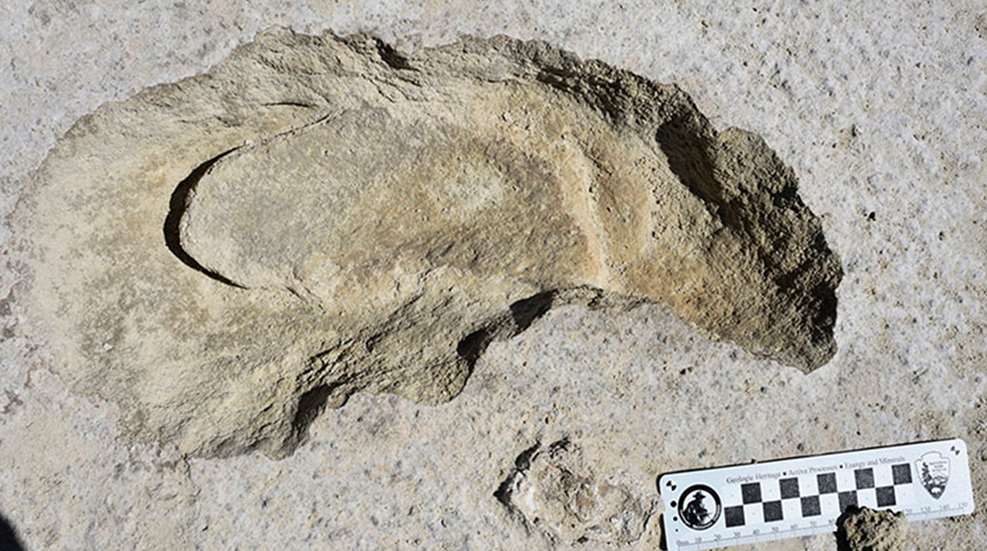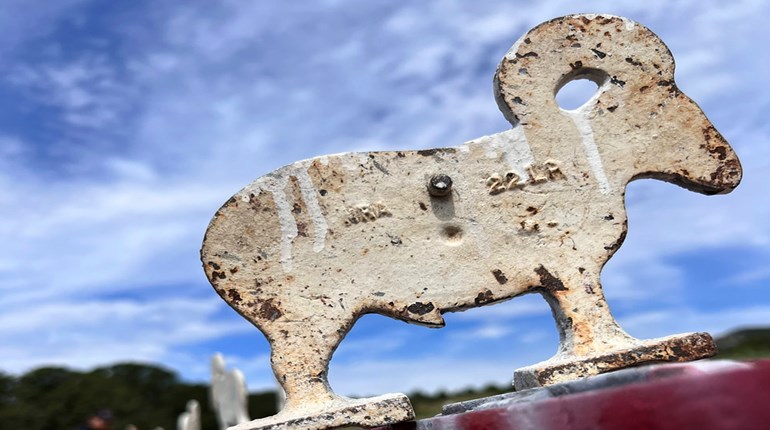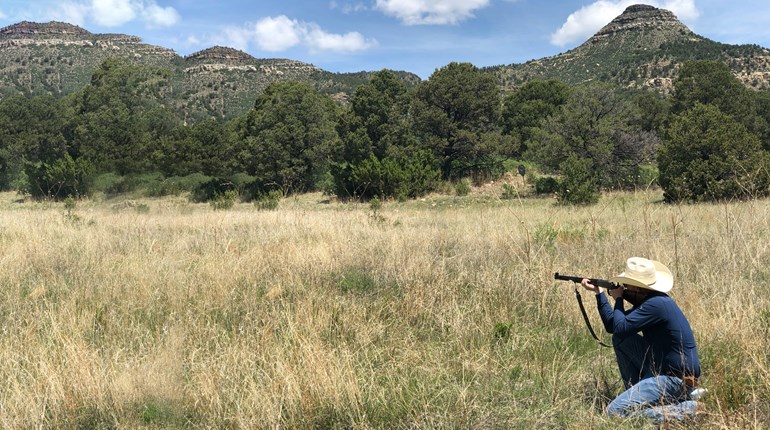
Prehistoric footprints of early human hunters have been found at the White Sands National Monument in New Mexico by a research team from Bournemouth University in southern England. According to a report published in the journal Science Advances, the tracks date back at least 11,000 years and appear to depict a group of humans stalking a giant sloth, an animal similar to sloths today, except it stood more than 6.5 feet tall and was 9 feet long.
Matthew Bennett, professor of environmental and geographical sciences at Bournemouth said, “The story that we can read from the tracks is that the humans were stalking; following in the footsteps, precisely in the footsteps, of the sloth.”
Sally Reynolds of the university’s Institute for Studies in Landscapes and Human Evolution explained how the hunt might have gone down. “The sloth would have raised itself up to full height and attempted to keep the attackers at bay with its long forearms and large, sharp claws,” she said. “The hunters would have needed to wait patiently to get the right opportunity to strike the killing blow in a vulnerable part of the sloth anatomy … . The hunters would have been at significant physical risk to themselves while the animal was defending itself.”
Bennett said the hunters likely coordinated their efforts to bring down the animal. “While [the sloth] was being distracted and turning, somebody else would come across and try to deliver the killer blow,” he described. “It’s an interesting story and it’s all written in the footprints.”
It’s commonly assumed that spears were the main tool of choice. Based on other human tracks found in the area, the hunters pursued the sloth as a group.
“Getting two sets of fossil footprints that interact, that show you the behavioral ecology, is very, very rare,” Bennett stated.





































